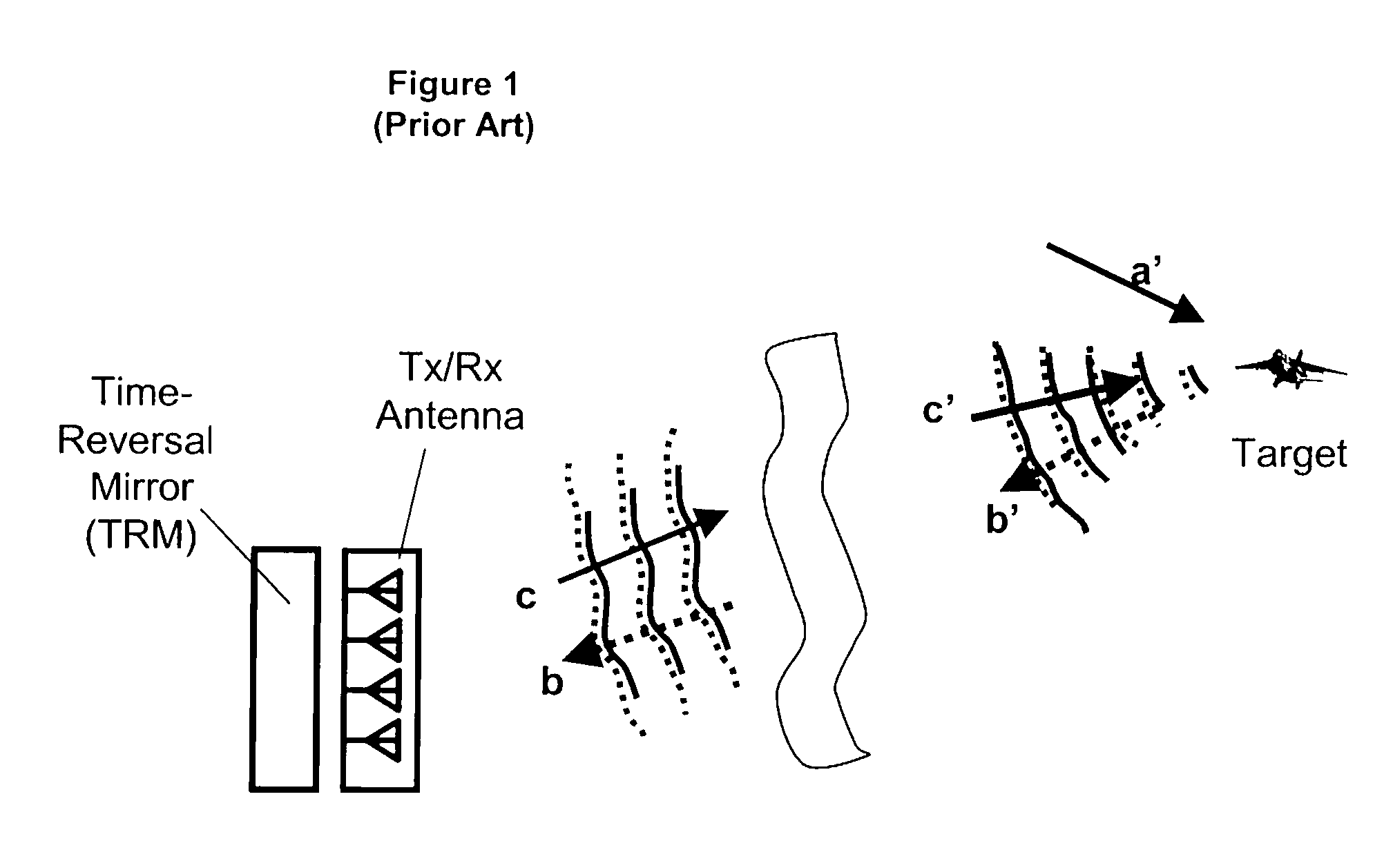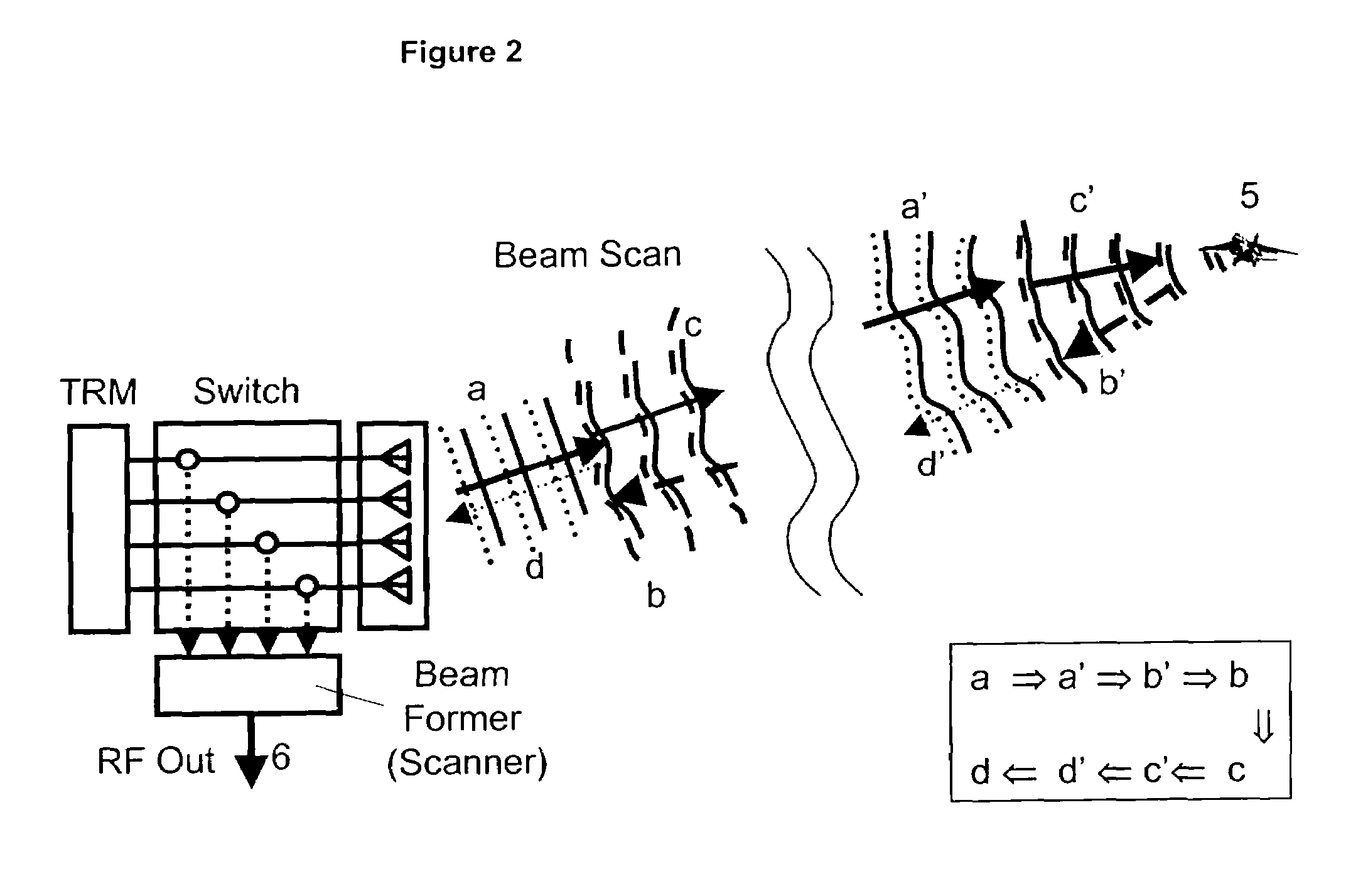Imaging radar method and system
a radar and imaging technology, applied in the field of high-resolution imaging radar, can solve the problems of limited use of imaging or radar applications, conventional time-reversal, and limited one-way distortion compensation proposed to date, and achieve the effects of improving resolution, high resolution, and extended virtual aperture (eva)
- Summary
- Abstract
- Description
- Claims
- Application Information
AI Technical Summary
Benefits of technology
Problems solved by technology
Method used
Image
Examples
Embodiment Construction
[0019]Consider a monochromatic beam propagating through a linear lossless distorting medium in k direction
E1( r,t)=Re[ψ( r)·ei(ωt− k· r)]=Re[A1( r)·eiωt].
A1( r) reflects spatial modulation of information such as distortion and diffraction. Phase conjugation of E2( r,t) is defined as
E2( r,t)=Re[ψ•( r)·ei(ωt+ k· r)]=Re[A2( r)·eiωt],
where A2( r)=A1( r).
To get E2 from E1, we take the complex conjugate of the spatial part only, leaving the factor eiωt intact. This is equivalent to leaving the spatial part alone but reversing the sign of t. That's why phase conjugation is often called time-reversal.
However, traditional phase conjugation works for only monochromatic waves and has limited applications, while time-reversal works for arbitrary waveforms.
[0020]Referring now to FIG. 2 and Table 2, the operational principle of the time-reversed double-passed extended virtual aperture (DPEVA) radar is described below in Table 2, noting that the “BEAM” is as shown in FIG. 2 with the corresponding ...
PUM
 Login to View More
Login to View More Abstract
Description
Claims
Application Information
 Login to View More
Login to View More - R&D
- Intellectual Property
- Life Sciences
- Materials
- Tech Scout
- Unparalleled Data Quality
- Higher Quality Content
- 60% Fewer Hallucinations
Browse by: Latest US Patents, China's latest patents, Technical Efficacy Thesaurus, Application Domain, Technology Topic, Popular Technical Reports.
© 2025 PatSnap. All rights reserved.Legal|Privacy policy|Modern Slavery Act Transparency Statement|Sitemap|About US| Contact US: help@patsnap.com



